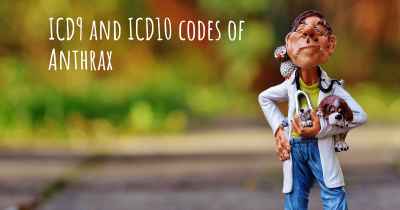Which are the symptoms of Anthrax?
See the worst symptoms of affected by Anthrax here

Symptoms of Anthrax
Anthrax is a serious infectious disease caused by the bacterium Bacillus anthracis. It primarily affects animals, but it can also be transmitted to humans. The symptoms of anthrax can vary depending on the route of exposure, but there are three main forms of the disease: cutaneous, inhalation, and gastrointestinal.
Cutaneous Anthrax
Cutaneous anthrax is the most common form of the disease and occurs when the bacteria enter the body through a cut or abrasion on the skin. The symptoms usually appear within 1 to 7 days after exposure and include:
- A small, painless bump that develops into a blister
- The blister then forms a black, necrotic (dead) area in the center
- Swelling and redness around the affected area
- Itching
- Flu-like symptoms such as fever, fatigue, and body aches
If left untreated, cutaneous anthrax can spread to the bloodstream and cause more severe symptoms.
Inhalation Anthrax
Inhalation anthrax occurs when the bacteria are inhaled into the lungs. This form of anthrax is the most deadly and can be fatal if not treated promptly. The symptoms of inhalation anthrax usually appear within 1 to 7 days after exposure and initially resemble a common cold or flu. However, they rapidly progress and become more severe, including:
- Fever and chills
- Chest discomfort and shortness of breath
- Cough, often with bloody or watery sputum
- Nausea, vomiting, and stomach pain
- Severe breathing difficulties
Inhalation anthrax requires immediate medical attention, as it can lead to respiratory failure and shock.
Gastrointestinal Anthrax
Gastrointestinal anthrax is the rarest form of the disease and occurs when the bacteria are ingested through contaminated food or water. The symptoms of gastrointestinal anthrax can appear within 1 to 7 days after exposure and include:
- Fever and abdominal pain
- Nausea, vomiting, and loss of appetite
- Bloody diarrhea
- Sore throat and difficulty swallowing
- Swollen neck and neck pain
Gastrointestinal anthrax can be fatal if not treated promptly, as it can cause severe damage to the intestines and other organs.
Other Forms
In addition to the main forms mentioned above, anthrax can also affect other parts of the body, such as the eyes (ocular anthrax) or the bloodstream (systemic anthrax). These forms are extremely rare, but they can cause severe complications if not treated.
If you suspect you have been exposed to anthrax or are experiencing any of these symptoms, it is crucial to seek immediate medical attention. Anthrax is a serious disease that requires prompt treatment with antibiotics to prevent further complications and potential death.








